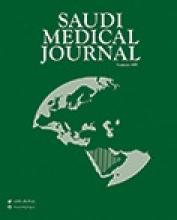20 APRIL 2020 - Measles, mumps, rubella and varicella (also known as chickenpox) are infectious diseases caused by viruses. They are most common in children and young adults, and can lead to potentially fatal illnesses, disabilities and death. Measles remains one of the leading causes of childhood death around the globe. Rubella is also dangerous for pregnant women, as it can cause miscarriage or harm to unborn babies.
The MMR (measles, mumps, rubella) is a combined vaccine that protects against all three infections. Clinicians can vaccinate against varicella (chickenpox) by a combined MMR and varicella vaccine (MMRV) or giving it separately at the same time (MMR+V).
“We wanted to assess the effectiveness, safety, and long- and short-term harms of the MMR vaccines in this updated review which was last updated in 2012,” explains lead author, Dr Carlo Di Pietrantonj of Italy’s Regional Epidemiology Unit SeREMI. “From the 138 randomised and non-randomised studies included in the review, 51 studies (10 million children) assessed how effective the vaccines were at preventing the diseases, and 87 studies (13 million children) assessed harms.”
In terms of effectiveness the review found:
Measles: one dose of vaccine was 95% effective in preventing measles. Based on the data analysed in the review, the number of cases would fall from 7% in unvaccinated children to under 0.5% in children who receive one dose of the vaccine. After two doses, effectiveness was similar at around 96%.
Mumps: one dose of vaccine was 72% effective in preventing mumps. This rose to 86% after two doses. From data analysed in the review. the number of cases would fall from 7.4% in unvaccinated children to 1% in children were vaccinated with two doses.
The results for rubella and chickenpox also showed that that vaccines are effective. After one dose of vaccine was 89% effective in preventing rubella, and one study found that after 10 years the MMRV vaccine was 95% effective at preventing chickenpox infection. If exposed to chickenpox, 5 out of 100 vaccinated children would catch it.
“In terms of safety, we know from previous studies all around the world that the risks posed by these diseases far outweigh those of the vaccines administered to prevent them,” says Dr Di Pietrantonj. “In this review, we wanted to look at evidence for specific harms that have been linked with these vaccines in public debate - often without rigorous scientific evidence as a basis.”
In relation to the controversy arising from false claims linking vaccination and autism, the review summarises evidence from two studies with 1,194,764 children. Diagnosed cases of autism were similar in vaccinated and unvaccinated children (1.)
Two further studies with 1,071,088 children find no evidence for any association between the MMR vaccines and encephalitis, inflammatory bowel disease, Crohn’s disease, cognitive delay, type 1 diabetes, asthma, dermatitis/eczema, hay fever, leukaemia, multiple sclerosis, gait disturbance and bacterial or viral infections.
“We judged the certainty of the evidence for the effectiveness of the MMR vaccine to be moderate. Although the studies that provide these data are not randomised the effects are very large. The certainty of the evidence for the varicella vaccine, based on an RCT, was judged to be high.” says Di Pietrantonj.
“Overall we think that existing evidence on the safety and effectiveness of MMR/MMRV/MMR+V vaccines supports their use for mass immunisation. Campaigns aimed at global eradication should assess epidemiological and socioeconomic situations of the countries as well as the capacity to achieve high vaccination coverage. More evidence is needed to assess whether the protective effect of MMR/MMRV could wane with time since immunisation.”
Full Citation: Cochrane Database of Systematic Reviews: Di Pietrantonj C, Rivetti A, Marchione P, Debalini MG, Demicheli V. Vaccines for measles, mumps, rubella, and varicella in children. Cochrane Database of Systematic Reviews 2020, Issue 4. Art. No.: CD004407. https://doi.org/10.1002/14651858.CD004407.pub4
Copyright © 2020 The Cochrane Collaboration. Published by John Wiley & Sons, Ltd., reproduced with permission.
- Copyright: © Saudi Medical Journal
This is an open-access article distributed under the terms of the Creative Commons Attribution-Noncommercial-Share Alike 3.0 Unported, which permits unrestricted use, distribution, and reproduction in any medium, provided the original work is properly cited.






